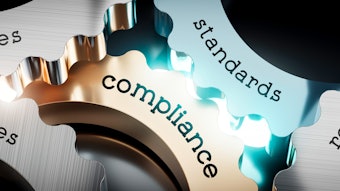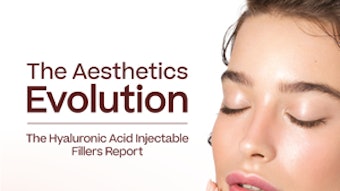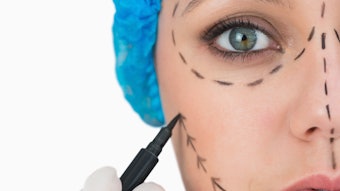
 Susanne Schmaling, president and founder of the Esthetics Council, an education and advocacy organization for licensed estheticians, has remained at the front lines of state restrictions that estheticians are facing.Courtesy of Susanne Schmaling
Susanne Schmaling, president and founder of the Esthetics Council, an education and advocacy organization for licensed estheticians, has remained at the front lines of state restrictions that estheticians are facing.Courtesy of Susanne Schmaling
This article is only available to registered users.
Log In to View the Full Article
 Susanne Schmaling, president and founder of the Esthetics Council, an education and advocacy organization for licensed estheticians, has remained at the front lines of state restrictions that estheticians are facing.Courtesy of Susanne Schmaling
Susanne Schmaling, president and founder of the Esthetics Council, an education and advocacy organization for licensed estheticians, has remained at the front lines of state restrictions that estheticians are facing.Courtesy of Susanne Schmaling
In the U.S., states have implemented regulations that restrict what an esthetician is able to do with their licenses and certifications in modalities like microneedling and lasers at med spas, classifying these services within medical jurisdictions and making their qualifications subordinate to physician expertise in medical settings.
“I have had to stop offering chemical peels, LED and hydradermabrasion–all of which were previously considered part of esthetic practice and are now being designated as medical treatments,” says Terri Wojak, a licensed esthetician in Illinois, who is affected by the regulations on her career. “This has been difficult for clients who have relied on these services as part of their skincare regimen.”
Schmaling, who is also a licensed master esthetician and certified laser technician, actively attending and monitoring the legislative meetings across various states that work to implement these precautions, says among the states with the strictest regulations underway are California, Idaho, Illinois and Florida.
Navigating Esthetician Limitations Across States for Advanced Cosmetic Procedures
In California, Schmaling says laser hair removal and other laser‑based procedures are classified as medical acts, restricted to physicians, RNs, PAs or NPs. Estheticians may not fire lasers under B&P Code § 7426 and Title 16 CCR § 991. Effective July 1, 2013, the Medical Board of California added Section 1364.50 to Article 10, Chapter 13, Title 16 of the California Code of Regulations that states the use of laser or intense pulse light devices are to be performed by physician assistants and other licensed health care providers. [2]
California Code of Regulations Title 16 § 991 defines invasive procedures, including those that penetrate the skin beyond the epidermis, as outside the scope of practice for estheticians. Laser hair removal involves such penetration and is therefore considered an invasive procedure [3].
“This means that a medical assistant technically cannot be supervised,” Schmaling says. “Estheticians are not allowed to be supervised under their legal license in many states and must act as medical assistants if allowed.”
In Idaho, the State Board of Cosmetology specifies that laser treatments, including microneedling with RF, fall outside an esthetician’s scope, requiring the involvement of a medical director to oversee these procedures [4].
Wojak says working under supervision, as she experiences in Illinois, proposes several barriers. Finding a physician willing to delegate under the current guidelines in Illinois can be challenging, as doctors may be hesitant to assume liability for treatments performed by others. The financial arrangement, too, can be expensive.
“Physician oversight often requires a significant percentage of service revenue and/or monthly fees, [and] the coordination with a medical professional can disrupt the flow of business, limiting time for them to see other patients,” she says.
The Illinois Department of Financial and Professional Regulation (IDFPR) and the Illinois Department of Public Health (IDPH) issued a memo on Dec. 2, 2024, clarifying the scope of practice for estheticians. According to the memo, estheticians are prohibited from using any technique, product or practice intended to affect the living layers of the skin. This includes procedures such as microneedling, deeper chemical peels, laser treatments and most device-based services unless they are delegated by a licensed physician within a valid physician-patient relationship [5].
 The Council conducts regulator education via state board inspector training modules on the safety profile of modern esthetic devices as well as coalition building among esthetician associations, allied health professionals and consumer‑safety advocates to present a unified front to advocate reform.Courtesy of Petro at Adobe Stock
The Council conducts regulator education via state board inspector training modules on the safety profile of modern esthetic devices as well as coalition building among esthetician associations, allied health professionals and consumer‑safety advocates to present a unified front to advocate reform.Courtesy of Petro at Adobe Stock
Wojak has reached out to the IDFPR for clarification regarding the scope of practice under the new guidelines. The responses she's received have been open to interpretation, leading estheticians to be unaware of the new guidelines or misunderstand their implications. A recognized "master esthetician" license or tiered licensing system would be incredibly beneficial for Illinois, she adds. This tiered approach could include advanced certifications for specific treatments, such as microneedling, dermaplaning and chemical peels, allowing estheticians who undergo additional training to legally perform these procedures without requiring physician oversight.
“It would also provide clarity to clients about the level of expertise an esthetician holds, fostering greater trust and ensuring safe, consistent treatment outcomes,” Wojak says.
Florida Admin. Code R. 61G5‑18.00015 specifically defines microneedling as beyond an esthetician’s scope, and thereby must be performed in a medical setting [6]. Microblading and any “bodily intrusion” devices follow the same rule, Schmaling adds.
“The statement that all medical spas are medical practices changes how these businesses operate, especially when looking at corporate practice of medicine laws,” Schmaling says.
Pushing for Progress: Esthetic Council Advocates for Scope Reform, Tiered Licensing and Regulatory Modernization
Some of the Esthetic Council’s advocacy includes legislative monitoring using the Council’s GPT‑powered bill tracker and regular review of state board rulemaking dockets. They are also drafting model legislation to modernize cosmetology acts—clarifying Class II device language and defining advanced‑training standards.
The campaigns the Council represents include formal objections, including to the Illinois memo, petitions and resist‑text messaging to key legislators. The Council also conducts regulator education via state board inspector training modules on the safety profile of modern esthetic devices as well as coalition building among esthetician associations, allied health professionals and consumer‑safety advocates to present a unified front.
The end goal for Schmaling would be a modern scope of practice that allows for independent professional growth by use of the latest modalities and non-invasive technologies, allowing estheticians to be able to support their families and have opportunities for growth.
“We want appropriate training that ensures skill and safety, and in this current regulatory environment the most likely fix is a second tier license with a clause about medical supervision and clear modality categories defined in law or regulation,” she says. “The prohibition on non-ablative laser use including hair removal needs to be removed or refined in most states.”
CEU’s, Schmaling adds, would be desirable as well, as a cosmetology scope should be separated from an advanced scope for esthetics due to the training requirements–a hybrid of beauty and wellness.
Wojak would like to see Illinois adopt a more progressive and clearly defined esthetics licensing structure, implementing a tiered system that includes a "master esthetician" or "advanced esthetician" license to bridge the gap between basic and advanced esthetics. Greater collaboration between state regulatory boards and esthetic industry leaders could ensure that guidelines are reflective of evolving technologies and treatments, she adds, to align state laws with modern esthetic practices to enhance safety, client care and the professional integrity of the industry.
“The over medicalization of beauty is putting many estheticians out of business,” Schmaling says. “I am not sure of the timeline–legislative work can take years, but if we can finally organize the industry, this could move quickly.”
References:
1-https://www.estheticscouncil.org/
2- https://www.pab.ca.gov/licensees/mbc_cosmetic_reg.shtml?
3- https://www.barbercosmo.ca.gov/laws_regs/art12.shtml?
5-https://idfpr.illinois.gov/content/dam/soi/en/web/idfpr/forms/dpr/idfpr-medspa-memo.pdf
6-https://www.ascpskincare.com/updates/blog-posts/new-florida-rules-affecting-estheticians?











